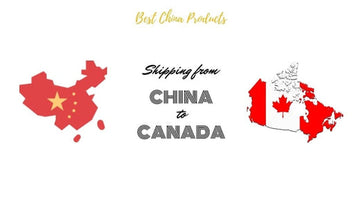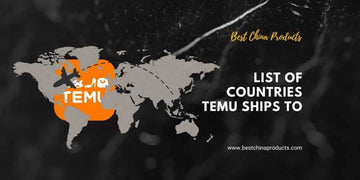When it comes to luxury fashion, everyone wants to know how much does It cost to manufacture a Gucci bag. However, the exact cost remains a well-guarded secret.
In this article, we delve into the intriguing world of luxury fashion manufacturing, attempting to estimate the expenses involved in creating these iconic bags.
While Gucci does not publicly disclose their production costs, we will explore various factors that influence the pricing.
By understanding the economics and craftsmanship behind Gucci's manufacturing process, we aim to shed light on why these bags come with such hefty price tags.
How Much Does It Cost to Manufacture a Gucci Bag?
While Gucci keeps the specifics under wraps, industry estimates suggest a range of $80 to $500.
This estimate encompasses materials, craftsmanship, branding, and marketing expenses. Keep in mind that these figures are approximate and subject to variation.
Some Gucci bags incorporate premium elements like rare animal skins, diamonds, or gold, leading to higher production costs. These exquisite, limited-edition pieces are meticulously crafted and often command a higher price.
In an article published by Glossy back in 2016, Oliver Cabell, a travel and leather goods designer brand revealed that including materials, labor, packaging, duties and transport, the total cost to produce one designer bag is approximately $80.
However, with the increase in cost of raw materials and labor over the years, the estimated cost to manufacture a designer handbag like Gucci is roughly $80 - $300+.
Factors Influencing Manufacturing Costs of Gucci Bags
Materials and Fine Craftsmanship
Gucci's commitment to producing high-quality bags is undeniable. The choice of materials, intricate detailing, and skilled craftsmanship contribute significantly to the manufacturing costs.
Premium leather, hardware, linings, and embellishments all play a role in elevating the bag's overall quality and, consequently, its price.
Rarity and Limited Quantity
Luxury brands like Gucci often create limited edition or exclusive collections. By manufacturing bags in limited quantities, they drive up demand, creating an air of exclusivity.
This marketing strategy allows them to command higher prices and maintain their reputation as a luxury brand.
Branding and Marketing Expenses
Establishing and maintaining a luxury brand image comes with considerable costs. Gucci invests heavily in branding, advertising, and marketing campaigns to position itself as a leading fashion house.
These expenses are factored into the overall manufacturing costs and ultimately reflected in the price of their products.
What Does It Cost to Make a Gucci Bag?

While Gucci does not disclose the exact figures, industry sources and estimations provide some insight. According to various online figures, manufacturing a luxury Gucci bag typically ranges from $80 to $500.
This estimate includes materials, craftsmanship, branding, and marketing costs. However, it is important to note that this is a rough approximation and may vary.
Certain Gucci bags feature exclusive materials like rare animal skins, diamonds, or gold accents, which significantly increase production costs.
These limited-edition or bespoke creations are meticulously handcrafted and often carry a much higher price tag.
Can Gucci Charge So Much for Their Bags?

The law of supply and demand greatly influences luxury pricing. Gucci takes advantage of its strong brand reputation and limited supply to create a sense of exclusivity and high demand.
This allows them to charge premium prices for their products.
Luxury brands like Gucci are renowned for their exceptional craftsmanship and durability. The bags are meticulously constructed to ensure longevity, making them a long-term investment.
Customers are willing to pay a higher price for the promise of superior quality and timeless elegance.
Gucci caters to a wealthy clientele with high disposable income. The brand's pricing strategy is designed to target individuals who can afford luxury goods without hesitation.
The exclusivity associated with owning a Gucci bag also adds to its appeal among affluent consumers.
Increasingly, consumers are questioning the high price tags of luxury brands. They seek transparency and value for money.
Are Real Gucci Bags Made in China?

When it comes to the production of Gucci bags, it is important to note that they are not made in China. Gucci, a reputable luxury brand, explicitly confirms that their handbags are exclusively manufactured in Italy.
This emphasis on Italian craftsmanship and heritage is a vital aspect of the brand's identity and commitment to delivering superior quality products.
Therefore, if you encounter Gucci bags that bear the label "Made in China," it is a clear indication that they are not authentic Gucci products.
It is crucial to be cautious when purchasing Gucci bags from any source that claims otherwise, as these counterfeit items do not uphold the same standards of quality, materials, and workmanship that Gucci prides itself on.
Are Authentic Gucci Bags Cheaper in China?
Not entirely true, when it comes to Gucci bags in China, the prices can vary from CNY 1,500 to CNY 8,000 (approximately US$240 to US$1,280) which is around the same price as the American and Western market, with maybe a bump in the price.
The cost of a Gucci bag in China is influenced by factors such as the bag's style, material, and size.
Popular Gucci bag styles like the "GG Marmont" and "Sylvie" generally fall within the range of CNY 4,000 to CNY 8,000.
For those looking for more high-end options, Gucci offers pricier bags such as the "Ophidia" and "Queen Margaret," which can reach up to CNY 30,000 (approximately US$4,700).
Gucci has achieved remarkable success in penetrating the Chinese luxury goods market and has become a prominent Chinese luxury brand.
With a strong presence of 40 stores across China, Gucci has effectively established itself on various social media platforms and garnered a significant customer base.
Over the years, Gucci has emerged alongside Dior and Chanel as one of the most renowned names in the Chinese market.
Where are Real Gucci Bags Made?
Authentic Gucci items are primarily made in Italy, which is the birthplace of the luxury brand. Italy has a long-standing reputation for its exquisite craftsmanship and attention to detail in the fashion industry.
Gucci takes pride in ensuring that its products are manufactured with the highest standards of quality, and the "Made in Italy" label is a testament to this commitment.
When it comes to Gucci dust bags, there have been instances where some of them are produced in China.
However, it's important to note that the dust bags alone do not represent the authenticity of the Gucci item. The main product, whether it's a bag, clothing, or accessories, is the key element to focus on when determining authenticity.
Gucci's decision to produce its goods in Italy serves multiple purposes. Firstly, it aligns with the brand's heritage and legacy.

Italy has a rich history in luxury craftsmanship and is renowned for its expertise in leather goods, which are integral to many Gucci products.
By manufacturing in Italy, Gucci ensures that its items are created by skilled artisans who have perfected their craft over generations.
Secondly, producing in Italy allows Gucci to maintain strict quality control throughout the manufacturing process.
The proximity to the production facilities enables the brand to closely monitor every stage of production, from sourcing the finest materials to ensuring precise stitching and finishing touches.
This attention to detail contributes to the consistent quality that Gucci is known for.

Moreover, the "Made in Italy" label carries a certain prestige in the fashion world. It signifies authenticity, craftsmanship, and luxury.
Gucci leverages this association to cater to customers who value Italian artisanship and the traditional methods employed in creating high-end fashion pieces.
While the majority of Gucci items are made in Italy, it's worth noting that the brand has expanded its presence globally.
Gucci has also established stores and production facilities in various countries to meet the growing demand for its products.
Also Read






